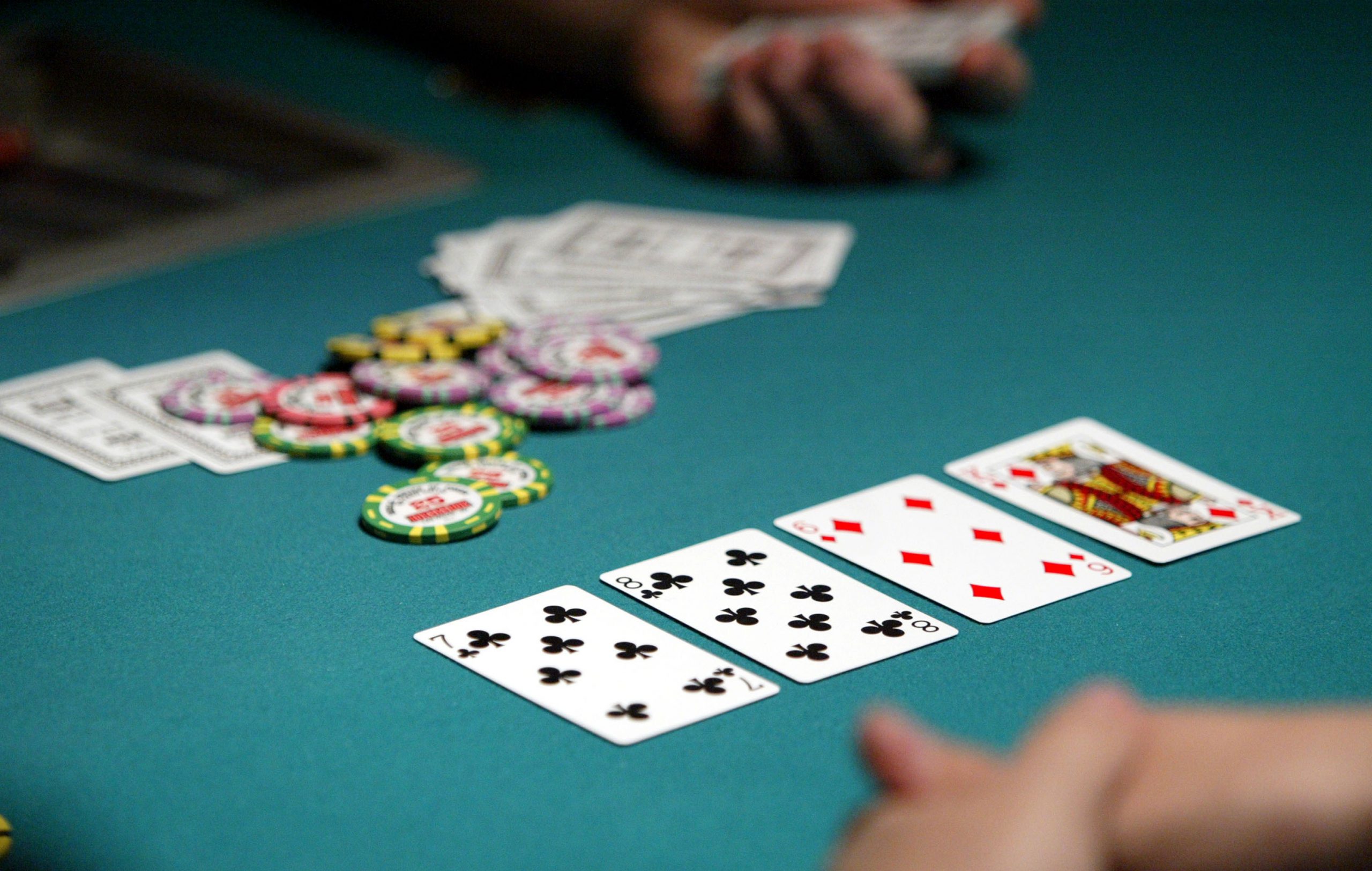It may take you some time to memorize the hands in poker so that you can easily know if you have won the hand or not, but after some practice, you will do fine. But, before you can play the game, you need to know the rules of doing so.
Most often, poker is a game of money. People often “bet” on the game to win a cash prize. Therefore, one of the first things that need to be established is the betting limits for the game. A betting limit will serve to keep the game friendly, upbeat and to keep people from losing it all in the game.
For example, a dollar amount can be used. There should be rules about possessions as well. Decide this before you begin playing any game. Once established, you can begin play.
Of course, you don’t technically have to play poker for money and it may not even be allowable. Yet, since this is the most common game play, that’s what we will include here for you.

Step By Step Play
Now on to playing the game; here are the steps to playing poker (5 Card Draw)
Step 1: Ante
The ante is the placing of something into the middle of the poker table. You will ante up something so that at the endof the game, someone has something to win. Generally, poker chips can be used. Yet, that’s not necessary. You can bet anything from coins to thousands of dollars (as they do in high stakes poker in Vegas.)
Step 2: Cards Are Dealt
Now, the cards of the game are dealt out by the dealer. He places one card in front of each person, face down and circles the table. The dealer is always dealt last, if he is playing. Once everyone has one card, he circles the table to give them the next one, until each player has received five cards. The deck is then placed into the middle of the table, face down. Players can look at their cards, then.
Step 3: All Bets Are Down
As each player takes a look at his card, he will determine where he stands. The first player should then place his bet for the hand. The player to the left of the dealer goes first by placing his bet into the center of the table. There are other methods to determine who has to bet first, but for those learning the game, this is the easiest method to use.
But, how do you bet?
There are two options in the first round of betting in a hand of poker. When no one has made a bet yet, you can select from these two options:
- Open Bet:
When your turn comes and no one has bet yet, you open the betting with your bet. You can bet anything you want, up to the betting limit that has been pre-established.
- Check Bet:
The betting comes to you and no one else has placed a bet yet. But, you don’t want to be the first person to open the bet, so you simply “check.” This means you don’t want to pull out of the game, but you don’t want to open betting either
At some point, someone has to open the betting and once that is done, there are a few more considerations as to what your next move is.
Now, there are three additional choices to make:
- You Can See:
If you see the bet, you match the bet that they have placed on the table. If they bet $5, then you need to bet $5 to match their bet.
- You Can Raise:
For those that will raise the bet, they will first need to “see” the previous bet and then you increase it by some amount. So, in our example, you would “see” the bet for $5 and then “raise” the bet by $5. When you want to play this hand, you would say, “I see your bet of $5 and raise you another $5.
- You Can Fold:
When you fold, you are now pulling out of the game without placing any bets on the table. To do this, you will say that you “fold” and place your cards on the table, face down. When you fold, you lose any bets that you may have already placed and you are out of the hand. When you believe that your poker hand is too weak, this is the way out that you will use until the next hand.
Step 4: New Cards
Now that everyone has had a chance to leave the game, it’s now time to reconsider your hand. Anyone that hasn’t folded out of the game should consider their cards. If you don’t want any of your cards, you can get rid of them. You can then pick up some new cards in the hopes of getting a better hand overall.
You can get rid of up to three cards and pick up three additional cards. You must keep five cards in your hand. When you discard them, place them face down on the table near the other deck. No one gets to see what those cards are. No one should see which cards you are picking up newly either.

You don’t have to make any changes at this point with your hand.
The goal is to add value to your hand by getting rid of any cards that don’t play well with others. Perhaps you have two aces and would like to try for another. By getting rid of another card that doesn’t add any value to your hand, you may be able to pick up a good card.
Also, this is a key time to pay attention to what others are doing. How many are they picking up or getting rid of? What this will help to tell you is the potential strength of their hand. While you don’t know the numbers they have, you can tell what they are holding onto.
Once everyone has made their new picks, you can move on to the next round.
Step 5: The Next Round
Now that everyone has gone through and picked up new cards, a new round if betting is done. All players again start the bidding process just as they did in the first round. You will have the ability to open or check at your round, and then once someone places a bet on the round, you can see, raise or fold at your turn
Again, the process follows the same as the last. When no one wants to raise or fold out of the game, the game is over.
Step 6: Who Won?
Finally, when everyone has either seen the bet or folded, the game is concluded. At this time, everyone is required to turn over their cards and see how well their hand met the other player’s hands. You can use the previous chapter to help you to place “value” on each player’s hand, based on what they have accomplished over the round.
Once everyone has turned over their cards to show what they had in the game, the highest player whose cards are valued the highest, wins the game. If you are playing for funds, the pot in the middle is awarded to the player that won the game.
When To Hold And When To Fold
When should you fold your hand? When should you hold on and try to pick up a few new cards? This is the largest risk that you take in the game of poker. There is no 100 percent for sure way to predict what will happen. Therefore, take the time to consider your situation.
- If you fold you are out of the game with no chance of winning the game at all. You lose any funds placed into the pot
- If you stay in you can pick up a few new cards and hope for the best results. Your new cards can help your situation, but they can’t really make it worse.
- If you stay in and don’t pick up any additional cards, your chances remain on what’s in your hand. It could be great, or it could be nothing.
If you don’t have a good hand or you have a very bad hand, you may want to fold right from the start. If you have an okay hand or a good hand, then staying in and drawing a new card to two can be a great decision to make. You have to analyze it.
Don’t get caught though. Let’s say that you draw an outstanding hand and know that it’s a rare one to get. You are likely to win this round. The worst thing that you can do is to allow everyone to think that you have a great hand. If they do believe that you have the best hand in the game, they will fold and you are left with a small ante. Not worth it.
Instead, invest the time in playing like it’s just an okay hand. They won’t realize what you have and you’ll benefit in the reward of the ante. They will believe that their hand is the highest value in the game throughout it.
The aforementioned points are just a few of them where you can understand the basics because whether it is poker or slot online, you can create your own rules so as to make any game more and more interesting because achieving success is the ultimate for any player.
The key to being a successful poker player is to know how to bluff your way through the game. Yes, lying is okay here. The goal is to provide your fellow players with no indication of the type of hand that you have. You also want to lead them to believe that their weak hand is better than your hand, so that they stick around.





